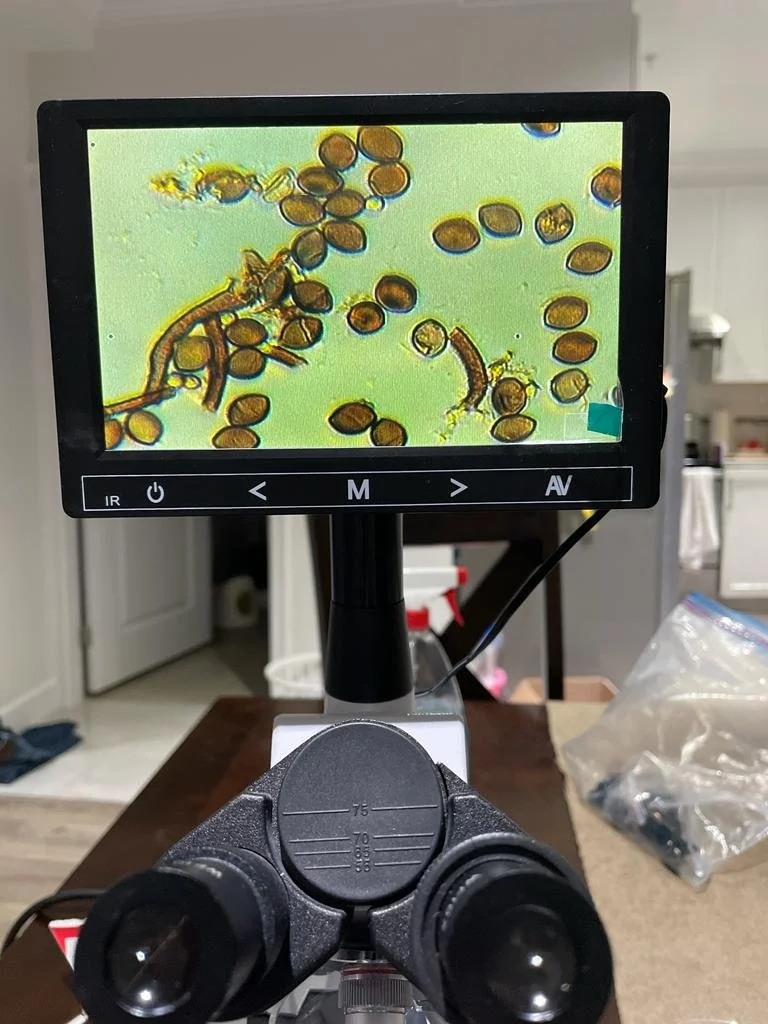Microscopy and How to identify Hazardous Black Mold in your Home
Introduction
With the colder weather and increased rainfall, many of us may encounter breathing difficulties, especially when it comes to the lurking threat of hazardous molds in our homes. In this blog post, I aim to assist those looking to test for mold by sharing the simple steps I took using our household lab microscope to identify the notorious "Black Mold." The best part? It's a budget-friendly solution, with a microscope costing just $100-$200.
Microscopy is a powerful tool that allows us to explore the unseen, and when it comes to identifying potentially hazardous molds like Stachybotrys, it becomes an invaluable ally. In this guide, we'll walk you through the steps of using a microscope to identify black Stachybotrys mold and empower you to take control of your indoor environment.
Section 1: Getting Started with Microscopy
1.1 Choose the Right Microscope
Before delving into mold identification, it's essential to select the right microscope. A compound light microscope with sufficient magnification (at least 40x) is suitable for observing mold specimens.
1.2 Prepare Your Microscope
Ensure your microscope is clean and properly calibrated. Adjust the lighting to achieve optimal contrast and brightness for a clear view.
Section 2: Collecting Mold Samples
2.1 Safety First
Before collecting samples, wear appropriate protective gear such as a mask, gloves, and goggles to minimize exposure to potentially harmful mold spores.
2.2 Sampling Methods
Use a sterile swab or tape to collect samples from suspected mold areas. For Stachybotrys, focus on damp or water-damaged materials like walls, ceilings, or carpets.
Section 3: Preparing Microscopic Slides
3.1 Slide Preparation
Place the collected sample on a glass slide, adding a drop of distilled water to create a wet mount. Cover it with a cover slip to prevent distortion and air bubbles.
3.2 Staining (Optional)
Staining is optional but can enhance visibility. Use a mold-specific stain like lactophenol cotton blue to highlight key features.
Section 4: Identifying Black Stachybotrys Mold
4.1 Observe the Morphology
Under the microscope, observe the morphological characteristics of Stachybotrys. Look for distinct features such as its slimy black appearance, irregular shape, and branching hyphae.
4.2 Identify Spore Structures
Focus on the spore structures, known as conidiophores. Stachybotrys typically produces distinctive spore structures resembling a dark, spherical head on a long stem.
4.3 Confirm Findings
Cross-reference your observations with reliable identification guides or consult with professionals to confirm the presence of Stachybotrys mold.
Section 5: Taking Action
5.1 Assess Health Risks
Understanding the potential health risks associated with Stachybotrys is crucial. Consult with healthcare professionals if exposure symptoms arise.
5.2 Remediation
If Stachybotrys is confirmed, initiate prompt remediation measures. This may involve removing and replacing affected materials and addressing the underlying moisture issues.
Conclusion
Armed with a microscope and knowledge, you now have the tools to unveil the hidden world of black Stachybotrys mold. Regular inspections and proactive measures are key to maintaining a healthy indoor environment. By identifying and addressing mold issues promptly, you contribute to a safer and more comfortable living space for you and your loved ones.
